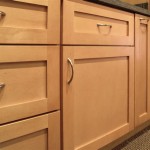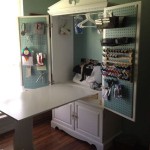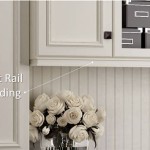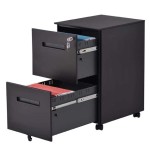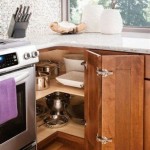Wall-Hung Bathroom Sink Cabinets: A Comprehensive Overview
Wall-hung bathroom sink cabinets, also known as floating vanities, have become increasingly popular in contemporary bathroom design. Their aesthetic appeal, space-saving advantages, and ease of cleaning contribute to their widespread adoption in both residential and commercial settings. This article provides a detailed examination of wall-hung bathroom sink cabinets, focusing on their benefits, design considerations, installation requirements, and maintenance tips.
Benefits of Wall-Hung Bathroom Sink Cabinets
One of the primary advantages of wall-hung cabinets lies in their ability to maximize floor space. By suspending the cabinet above the floor, the visible surface area is increased, creating the illusion of a larger and more open bathroom. This is particularly beneficial in smaller bathrooms or powder rooms where space is at a premium. The open space beneath the cabinet also allows for flexible storage solutions, such as baskets or decorative containers, further enhancing the utility of the bathroom.
Beyond space-saving benefits, wall-hung cabinets offer improved accessibility. With the absence of a traditional cabinet base, individuals with mobility issues, such as those using wheelchairs or walkers, can easily access the sink without obstruction. This enhanced accessibility contributes to a more inclusive and user-friendly bathroom design.
Hygiene is another significant advantage. The open space beneath the cabinet simplifies cleaning. There are no hard-to-reach corners or crevices where dirt and debris can accumulate. This ease of cleaning helps maintain a more hygienic and sanitary bathroom environment, reducing the risk of mold and mildew growth.
Aesthetically, wall-hung cabinets contribute to a modern and minimalist design aesthetic. Their clean lines and floating appearance create a sense of lightness and sophistication. They are available in a wide range of materials, finishes, and styles, allowing homeowners to seamlessly integrate them into various bathroom designs, from contemporary to traditional.
Design Considerations for Wall-Hung Cabinets
Several factors should be considered when selecting a wall-hung bathroom sink cabinet. These considerations encompass size, material, style, storage capacity, and plumbing compatibility.
The size of the cabinet should be proportional to the dimensions of the bathroom. In smaller bathrooms, a compact cabinet is recommended to avoid overwhelming the space. In larger bathrooms, a larger cabinet with ample counter space and storage can be considered. The height of the cabinet is also crucial, and should typically be installed at a comfortable height for all users, generally between 30 and 36 inches from the floor.
The material selection significantly impacts the aesthetics, durability, and maintenance requirements of the cabinet. Common materials include wood, MDF (Medium-Density Fiberboard), plywood, and metal. Solid wood offers a classic and durable option, but it is more susceptible to moisture damage. MDF and plywood are more affordable alternatives, but they should be properly sealed to prevent water damage. Metal cabinets offer excellent durability and water resistance, making them ideal for humid bathroom environments.
The style of the cabinet should complement the overall design of the bathroom. Wall-hung cabinets are available in a variety of styles, including modern, contemporary, traditional, and rustic. Consider the existing fixtures, finishes, and colors in the bathroom when selecting a cabinet style to ensure a cohesive and harmonious design.
Storage capacity is another important consideration. Evaluate the storage needs of the bathroom and select a cabinet with adequate drawers, shelves, or compartments to accommodate toiletries, towels, and other bathroom essentials. Consider the types of items to be stored and choose a cabinet with appropriate storage configurations to maximize organization.
Plumbing compatibility is a crucial factor. Ensure that the cabinet is compatible with the existing plumbing system. Consider the location of the water supply lines and drainpipe when selecting a cabinet to avoid costly plumbing modifications. Pre-cut holes for plumbing are common, but may require adjustments.
Installation Requirements for Wall-Hung Cabinets
Proper installation is critical to ensure the stability and longevity of a wall-hung bathroom sink cabinet. The installation process typically involves the following steps:
First, it's crucial to locate the wall studs. Wall studs are the vertical framing members that provide structural support. Use a stud finder to locate the studs behind the wall where the cabinet will be mounted. Mounting the cabinet directly to the studs is essential to ensure that it can safely support the weight of the sink, countertop, and stored items.
Next, measure and mark the location of the cabinet. Use a level to ensure that the cabinet will be installed horizontally. Mark the location of the mounting holes on the wall, aligning them with the studs. Precise measurements are critical to prevent misalignment and ensure a professional-looking installation.
Drill pilot holes into the studs at the marked locations. The pilot holes should be slightly smaller than the diameter of the mounting screws. This will make it easier to drive the screws into the studs and prevent the wood from splitting.
Attach the cabinet to the wall using lag bolts or heavy-duty screws. Ensure that the screws are long enough to penetrate deeply into the studs. Use washers to distribute the load and prevent the screws from pulling through the cabinet. Tighten the screws securely to ensure that the cabinet is firmly attached to the wall.
Connect the plumbing. Connect the water supply lines and drainpipe to the sink. Use Teflon tape or pipe dope to seal the connections and prevent leaks. Ensure that all connections are tight and secure.
Finally, test the plumbing for leaks. Turn on the water and check for any leaks around the connections. Repair any leaks immediately to prevent water damage. Caulk around the edges of the cabinet where it meets the wall to prevent water from seeping behind the cabinet.
It is important to note that installing a wall-hung cabinet can be a complex task. If you are not comfortable with plumbing and carpentry work, it is recommended to hire a qualified professional to perform the installation.
Maintenance Tips for Wall-Hung Cabinets
Proper maintenance is essential to prolong the life of a wall-hung bathroom sink cabinet. Regular cleaning, inspection, and repair are necessary to keep the cabinet in good condition.
Clean the cabinet regularly with a mild soap and water solution. Avoid using abrasive cleaners or harsh chemicals, as these can damage the finish. Wipe the cabinet dry after cleaning to prevent water spots and moisture damage.
Inspect the cabinet regularly for signs of water damage, such as swelling, warping, or discoloration. Address any water damage promptly to prevent further deterioration. Repair any leaks in the plumbing system immediately.
Tighten any loose screws or hardware. Over time, screws and hardware can loosen due to vibrations or normal wear and tear. Tighten them periodically to ensure that the cabinet remains securely attached to the wall.
Protect the cabinet from excessive moisture. Use a bathroom fan or open a window to ventilate the bathroom after showering or bathing. This will help reduce humidity and prevent moisture damage to the cabinet.
Avoid placing heavy objects on the countertop. Wall-hung cabinets are designed to support a certain amount of weight. Overloading the countertop can put excessive stress on the cabinet and potentially damage it. Distribute weight evenly across the countertop.
By following these maintenance tips, homeowners can ensure that their wall-hung bathroom sink cabinets remain in excellent condition for years to come.
In conclusion, wall-hung bathroom sink cabinets offer a compelling combination of aesthetic appeal, space-saving benefits, and improved accessibility. Careful consideration of design factors, along with proper installation and maintenance, is essential to maximizing the advantages of these versatile bathroom fixtures. Choosing the right cabinet and following the guidelines outlined above can result in a functional, stylish, and long-lasting addition to any bathroom.

Harbour Clarity 600mm Wall Mounted Vanity Unit Basin Tap Warehouse

Elegant Wall Mounted White Bathroom Vanity Unit And Sink Basin Home Furniture

5 Practical Advantages Of Wall Hung Bathroom Vanity Cabinets Clickbasin

Sonix Grey 800mm Wall Hung Vanity Basin Unit With Drawers Buy Online At Bathroom City

Countertop Bathroom Vanity Unit With Basin 600mm Ribbed Black Impact Furniture

Dwight 500mm Wall Hung Basin Vanity Unit 2 Drawer Bathroom Storage Cabinet Grey Gloss Willesden

Venice Linea 600mm Rustic Oak Wall Hung 2 Drawer Vanity Unit Victorian Plumbing

Wall Hung Vanity Units Bathroom Furniture World Of Tiles

Wall Hung Vanity Units Floating Unit Drench

Acf Da05 By Nameek S Dadila Single Bathroom Vanity 33 Wall Mounted Thebathoutlet



